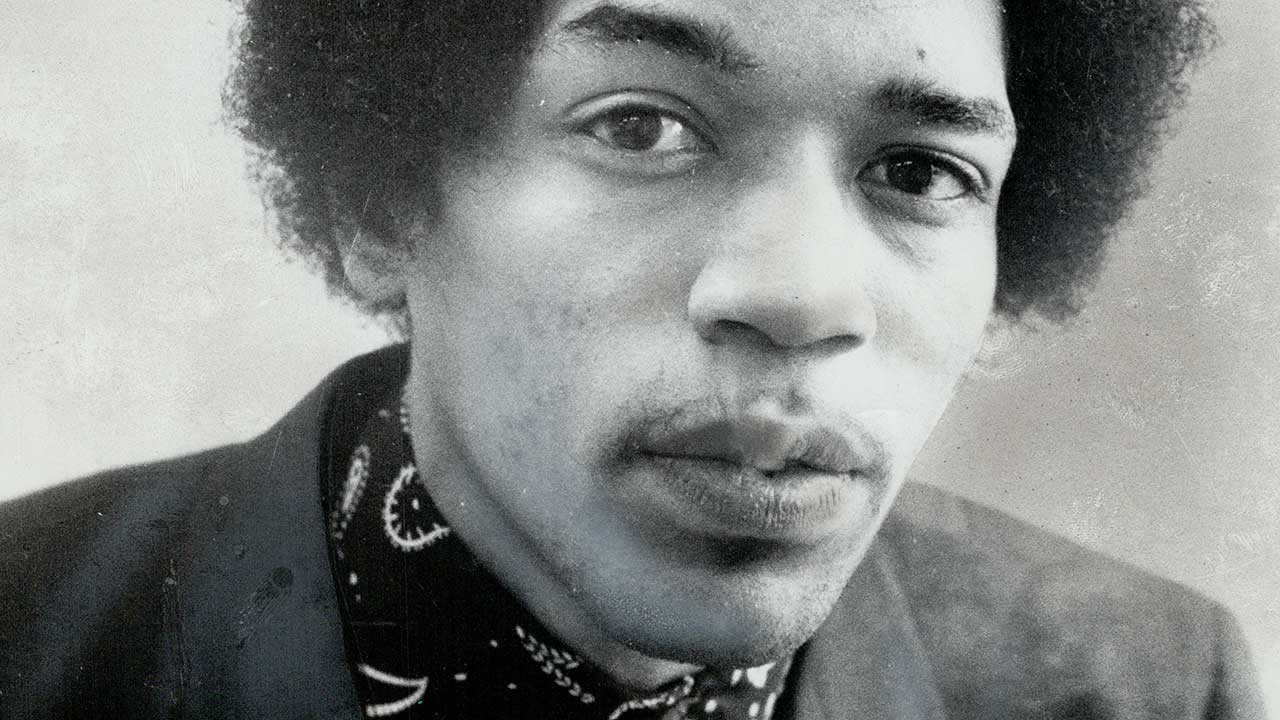Early one morning in August 1969, bassist Billy Cox was sitting on the patio of the house in upstate New York that he was sharing with Jimi Hendrix and drummer Mitch Mitchell. Looking out at the cows grazing in the nearby pasture, Cox thumbed a four-note pattern over and over through his amp.
“I’d put some new strings on, and I’m playing ‘doodoo-dum-dum’ – the chime of Big Ben,” Cox tells Classic Rock. “Jimi’s room was right above, and the window flew open. He said: ‘Hold it! Keep playing that, don’t stop!’ He comes down in his undershorts and grabs his guitar, then he completes the riff. That was the formation of Dolly Dagger.”
Hendrix, Cox, Mitchell and assorted friends were at the Shokan House to prepare for playing at the Woodstock Festival. “But really, Jimi rented that place to get his head together, and bringing Billy in was essential to the whole musical vibe,” engineer Eddie Kramer tells us.
“The change of musical direction was immediate, because of the roots they shared – the R&B, the funk. They grew up on those sounds, playing the chitlin circuit.”
“We were hooked at the hip musically,” Cox says with a laugh. “We’d been in the 101st Airborne together. Twenty minutes after we first met we were jamming. One reason that Jimi called me after all those years is that my mind was an archive of the riffs that we’d created in the past.”
“They were writing a lot,” says Kramer. “I remember dragging a four-track tape machine up there, and Dolly Dagger was one of the demos we worked on. Then we cut a version of it at the Record Plant, which was meh. We finally nailed it at Electric Lady. It’s all part of the experience, no pun intended, of how Jimi would work through a song to get it right. And Dolly Dagger is a complex song.”
With hindsight the song’s complexity is fitting for the woman who inspired the lyrics. Devon Wilson was born in Milwaukee in 1943 and ran away from home as a teenager.
“She was a mixed-race kid, on the streets all her life,” Cox explains. Devon drifted to New York City, where she became part of the nightclub scene. That’s where she met Hendrix.
“They had a really close relationship,” says Kramer. “Devon was a presence. Very beautiful, very commanding, with quite an edge to her. But she was funny.”
Devon kept Jimi happy by scoring drugs for him and procuring girls for threesomes. But as they grew closer, she expected to be his number one.
“Devon used to hang out on the sessions, and try not to say too much,” says Kramer. “But she was used to a lot of attention. When Jimi was in the middle of recording, sometimes it would be very difficult to give her attention.”
It was this dynamic that led to the episode at the centre of the song’s lyric. On November 27, 1969, Jimi’s twenty-seventh birthday, he and Devon went to see the Rolling Stones at Madison Square Garden. Since it was his birthday, Jimi half-expected to sit in with his friends. But Mick Jagger was wary of being upstaged, so it didn’t happen.
Afterwards Devon hosted a party for the Stones at a luxurious apartment she’d borrowed. All night she flirted shamelessly with Jagger in front of Hendrix. Mick’s rivalry with Jimi extended beyond the stage. A few years earlier, Jimi had tried to pull Jagger’s girlfriend Marianne Faithfull. At some point, Jagger nicked his finger. Rather than get a bandage, Devon licked off the blood.
“That’s where the line ‘She drinks the blood from a jagged edge’ came from,” says Kramer.
After the song’s basic rhythm track was cut at Electric Lady studios, Jimi layered on more guitars, backing vocals and foot stomps. Dolly Dagger was intended for the follow-up to Band Of Gypsys, but ended up being hijacked for a film soundtrack put together by Hendrix’s manager Mike Jeffery.
As explored in the documentary Music, Money And Madness: Hendrix In Maui, the film, Rainbow Bridge, was a mishmash of underhanded deals and unscripted silliness. Its only redeeming features were the scenery and Jimi’s killer performance.
It was on the side of a dormant volcano called Haleakala, which means ‘house of the sun’,” Cox says. “I remember as we walked to the stage, Jimi looked at me and said: ‘Man, this is strange. Do you feel that vibration?’ It had a lot of energy. But when we went on, it was magic. Jimi was in charge. I think I could’ve played with one hand because it was so spiritual.”
Dolly Dagger was first released on October 9, 1971 on the posthumously released Rainbow Bridge album, then as a single on October 23. Jimi didn’t live to see the release of the film or the soundtrack (he died on September 18, 1970). The funkier new direction suggested by Dolly Dagger added another question mark to his story.
“If he’d lived, I think he’d have his own empire,” Kramer says. “He would’ve straightened his life out, found great new musical directions. His place in history would be even greater than it is now.”
“Jimi was a cosmic messenger who saw music as a means to bring people together,” Cox says. “He was global before the rest of the world was global. His music is as relevant in the twenty-first century as it was in the twentieth. And it’ll probably be relevant in the twenty-second and twenty-third centuries.”
As for Dolly Dagger herself, Devon Wilson met an untimely end when she fell from an eighth-storey window of the Chelsea Hotel in 1971. What did she think of the song that made her part of history?
“In a perverse sort of way, she probably dug it,” says Kramer. “It’s not so much that it stroked her ego, as it revealed something about her. Even though it had some negative aspects, hey, imagine being in 1970 and having Jimi Hendrix write a song about you!”
Music, Money And Madness: Hendrix In Maui and the accompanying album Live In Maui are out now via Experience Hendrix LLC in partnership with Legacy Recordings.

